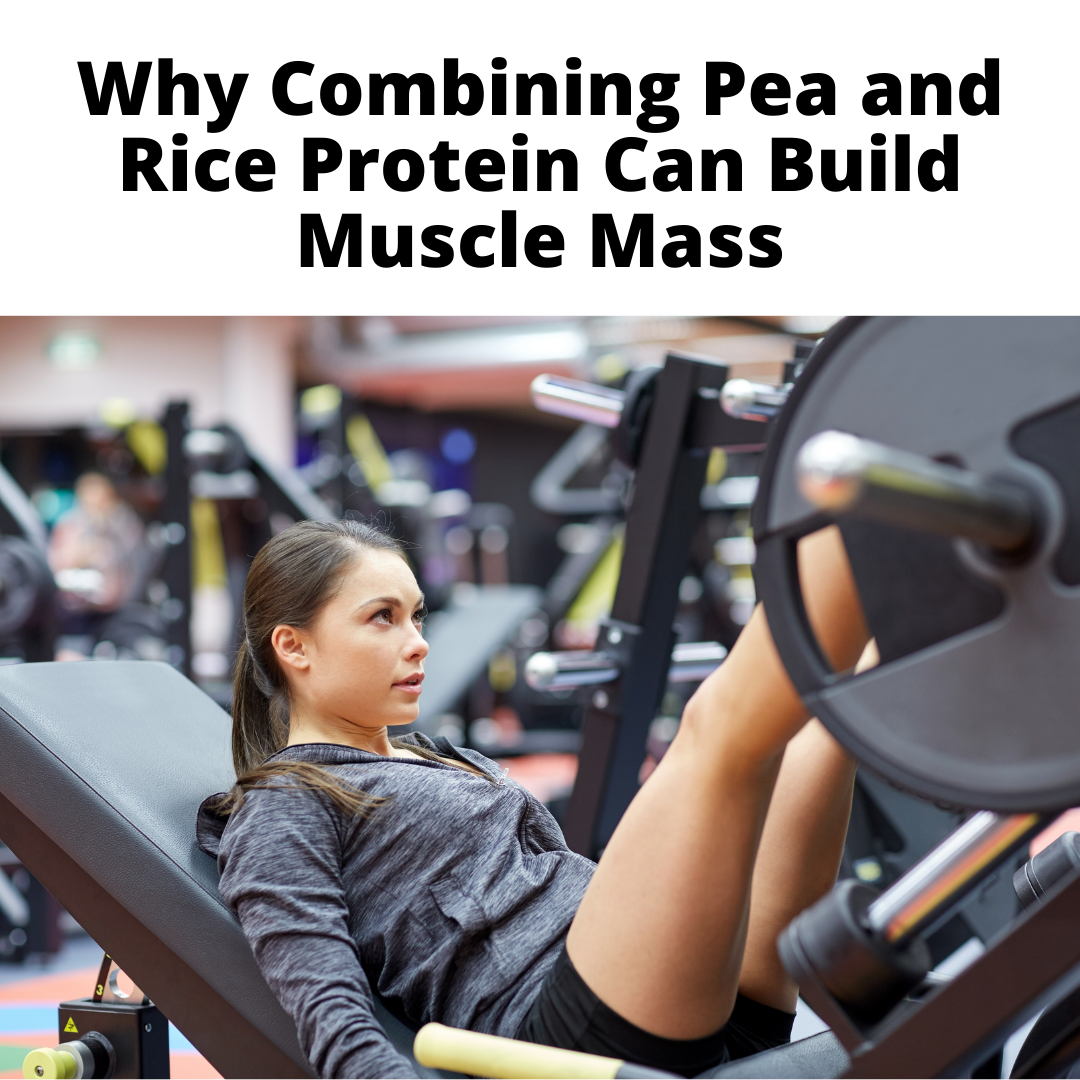Today’s article aims to explain what rice and pea protein are, why combining these two plant proteins can be beneficial for muscle building, and how to use rice and pea protein in your daily diet.
What is brown rice protein?

Rice protein is one of the newest and most compelling dietary supplement options on the market. Rice and brown rice protein comprise two of the healthiest foods on the planet, making them a natural choice for good health.
Soluxe Brown rice protein is a protein powder made from the Non-GMO brown rice. It’s a complete protein (has all 9 essential amino acids your body doesn’t produce on its own) that is made using a hexane-free extraction process to create a protein with a superior amino acid profile, making it an excellent alternative to whey for those on a plant-based diet.
Soluxe Brown Rice Protein is free of additives and artificial sweeteners. We are committed to shortening the steps between our farms and you. Independent third-party tested for heavy metals.
What is pea protein?
Pea protein is a protein powder made from yellow peas. It’s also a complete plant-based protein. You can read more about Soluxe Pea Protein here.
Why mix pea and rice protein together?

Pea and rice protein seem like a good match when it comes to plant protein. Rice protein is a grain that is easy to digest, has a nice balance of amino acids that provide the necessary building blocks for muscle and tissue growth.
Pea protein is similar because it provides all 18 essential amino acids in an easy-to-digest form. There are many consumers who don’t like eating meat, but still want to get their daily allotment of proteins. In addition, there are those who feel they can’t eat red meats, or have no desire to have them in their diet.
What is a complete protein?
Amino acids are units that make up the structure of a protein. There are 20 amino acids present in proteins; nine are considered essential, meaning the body does not produce them on its own and we have to get them from food.
The 9 amino acids we must get from our diet are as follows.
- Leucine
- Valine
- Isoleucine
- Histidine
- Lysine
- Methionine
- Threonine
- Tryptophan
- Phenylalanine
The other 11 amino acids are called non-essential amino acids, meaning that they are naturally produced by the body and you do not need to get them from your diet.
How to get complete protein on a plant-based diet?
Meat, eggs, and milk are great sources of high-quality protein because they contain all the essential amino acids.
Some plant foods like beans, peas, and lentils contain adequate amounts of protein, but they may lack essential amino acids to be considered as a complete protein.
The incomplete protein profiles of plant-based foods make it more difficult to get an adequate source of high-quality protein. But a well-planned diet can make sure you are getting an adequate amount of protein.
Combining Pea Protein and Rice Protein has been shown to build muscle faster than either one alone, due to its ability to stimulate stem cell production in the body.
Do rice and pea protein complete each other?

Combining pea and rice proteins makes up a more balanced amino acid composition. Pea protein lacks methionine but contains adequate lysine. Brown rice protein is the opposite. It contains high amounts of methionine but not enough lysine.
When combined, they help fill in each other’s gaps to form a complete protein.
How to mix pea and rice protein?
You can mix pea and rice protein to have a 50/50 ratio. For example, you combine half a serving of each protein into a smoothie for a complete protein source.
Key takeaways
Pea and rice proteins are a great example of high-quality plant-based proteins that can improve your overall health, as well as support muscle growth and recovery.
They are ideal for those with food allergies, intolerances, or someone wanting to incorporate more plant-based foods into their diet.
Mix pea and rice protein in your oatmeal, smoothie, shakes, pancakes, energy bites, muffins, etc. The options are endless, just have fun with it!
Sources:
Ge, J., Sun, C., Corke, H., Gul, K., Gan, R., Fang, Y. The health benefits, functional properties, modifications, and applications of pea (Pisum sativum L.) protein. Comprehensive Reviews in Food Science and Food Safety. 2020 June 22;19:1835–1876. DOI: 10.1111/1541-4337.12573
Gorissen, S.H.M., Crombag, J.J.R., Senden, J.M.G, Waterval, W.A.H, Bierau, J., Verdijk, L.B., van Loon, L.J.C. Protein Content and Amino Acid Composition of Commercially Available Plant-Based Protein Isolates.
Springer. 2018 Aug 30; 50: 1685-1695 Krefting, J. The Appeal of Pea Protein. Journal of Renal Nutrition. 2017 Sep 1; 27(5): 31-33 Tuso, P.J, Ismail MH, Ha BP, Bartolotto C. Nutritional update for physicians: plant-based diets.
Perm J. 2013;17(2):61-66. doi:10.7812/TPP/12-085 Watford M, Wu G. Protein. Adv Nutr. 2018;9(5):651-653. doi:10.1093/advances/nmy027



